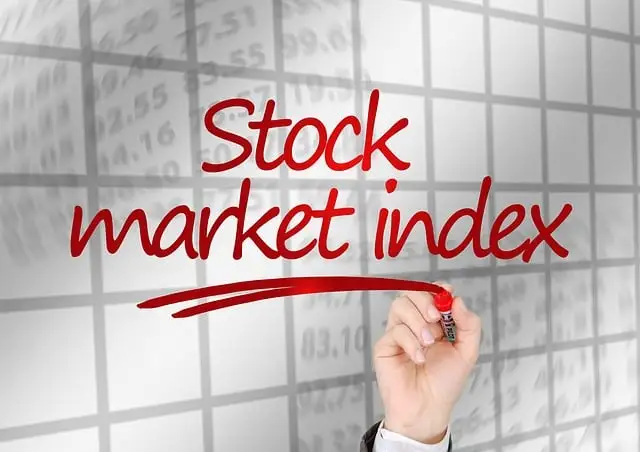It’s a Sunday night. While most people are relaxing, watching PewDiePie or Ownage Pranks, I’m at my desk. No distractions. No background noise. Just me, a screen, and peer-to-peer lending. What started as casual research spiraled into something else entirely.
The deeper I went, the more red flags I found—serious ones. That’s because I dive into every detail, line by line, in the fine print that no one reads. I’m not making any of this up—this is buried in the disclosures most people skip.
So let’s talk. If you’re even thinking about investing in peer-to-peer lending platforms like Prosper.com or LendingClub.com, you need to hear what I’ve found.
The Sales Pitch: What Peer-to-Peer Lending Promises
The idea is simple. These platforms act as a matchmaker. Borrowers need money. You have money. The platform connects the two.
Because they’re not traditional banks with massive overhead, they can offer lower interest rates to borrowers and higher returns to you. Sounds perfect, right? You get to be the bank. You can even diversify across dozens or hundreds of loans—investing as little as $25 per loan.
Let’s say you’ve got $1,000 to invest. You spread that across 40 people. If one defaults? No big deal. You’ve still got 39 others paying you interest. That’s the pitch, and on paper, it sounds airtight.
But let’s crack that paper open.
The Hidden Costs and Fees
Let’s start with something minor: fees. I hate fees. They’re the enemy of returns.
LendingClub charges you a 1% fee on all payments collected from borrowers. That’s your cut, shaved off the top. To make it worse, they also charge the borrower up to 6% in origination fees. Meanwhile, Vanguard charges 0.04%. Fidelity? They offer zero-fee index funds. So, 1% here feels excessive. But fine—fees are part of the game.
Now here’s where it gets nastier. If a borrower doesn’t pay and LendingClub has to collect through litigation, they take 40% of whatever they recover. If there’s no litigation? 30%. That’s after expenses. That’s your investment getting cut down, again and again.
According to the New York Fed, only 12–13% of consumers pay back debts in third-party collections. So if your borrower defaults, your chances of seeing that money again? Around 1 in 10.
The Real Default Rates
Here’s what the numbers say: Since 2007, LendingClub has issued around $32 billion in loans. Of that, $2.5 billion has been charged off. That’s a 7.8% default rate. Meaning 1 in every 13 loans vanishes.
| Credit Grade | Estimated Interest Rate | Default Rate |
|---|---|---|
| A | 6.0% | 2.0% |
| B | 9.0% | 4.5% |
| C | 13.0% | 7.0% |
| D | 17.0% | 10.5% |
| E | 21.0% | 13.5% |
| F | 25.0% | 17.0% |
| G | 28.0% | 20.0% |
And when your loan gets written off, it’s sold to a collection agency—usually for pennies. A $25 loan? Might get you $1 back, minus fees. It’s a bad deal all around.
Worse, you can’t chase the borrower. The agreement is between them and the platform. You’re just a bystander. Legally, you have no recourse.
Your Money Gets Trapped
Let’s say you still want to invest. You’re in it for the long game. Fine. Just know this: your money is locked up for 3 to 5 years—the duration of the loan.
If you need to pull out early? Good luck. Your only option is to sell on the secondary market, often at a 20–40% discount. If you need liquidity, this is a terrible place to put your money.
And in a downturn—when you might want to jump on undervalued investments—you won’t be able to. You’re stuck. Fully locked in.
Taxes Will Gut Your Returns
Even if everything goes smoothly—no defaults, steady payments—you’ll still lose a chunk to taxes. Returns from peer-to-peer lending are taxed as ordinary income. That’s your highest marginal rate.
If you’re in a high-income bracket, that means paying 30% or more on those earnings. Compare that to long-term capital gains, typically taxed at just 15%. You're tying up your money for years, but not even getting the benefit of long-term tax treatment. It makes no sense.
The Big Problem: Borrower Risk Is All On You
Here’s where I draw the line. Many borrowers on these platforms didn’t go to a bank for a reason. Either they didn’t qualify, or they didn’t want the scrutiny. Banks are risk-averse. They say no when something doesn’t feel right.
So what do these borrowers do? They come to peer-to-peer lenders. And you become the one taking on the loans banks didn’t want.
Even worse, LendingClub admits—buried in the fine print—that loans can be issued without verifying borrower income. They may state income, but it’s not always verified. Remember 2006? 2007? The mortgage meltdown? That was built on stated income. This is the same idea.
So someone can go online, type in an income that sounds believable, get a loan, and disappear. Sure, it’ll hurt their credit. But if they don’t care? That’s it. You eat the loss.
And yes, lying on a loan application is fraud. But is a platform really going to track someone down and build a case? No. They’ll just write it off, sell it for a few cents, and move on.
When the Economy Crashes, This Will Too
This gets even more dangerous during a recession. Unsecured debt is the first thing people stop paying. They lose a job? The car payment gets priority. Rent gets priority. Your $25 loan? That gets ghosted.
And while defaults go up, your money stays locked in. Just when you need it the most—when the stock market is down, and buying opportunities are everywhere—you won’t have access. Because you handed your money to someone who may never pay it back.
The Bottom Line
If you're considering peer-to-peer lending, do your homework. Read everything. Understand the risks. For me, the juice isn't worth the squeeze.
Your returns are taxed like income. Your money is tied up for years. Defaults are real. And worse, you’re often the last line of defense between someone and their next financial collapse.
I’m not saying don’t do it. I’m saying know what you’re getting into.
Other articles for you

Dividend investing isn’t about being flashy or trendy

If you're serious about learning how to invest, start by understanding the basics—like dividend stocks

How to build a high-quality dividend stock portfolio from scratch

What if I told you there's a way to transform a simple $10,000 investment into a machine that could pay you thousands of dollars in monthly income during retirement?

Understanding Municipal Bonds: A Direct Guide for Smart Investors

Municipal bonds are far from flashy—but that’s their strength

Learn how to invest in REITs effectively, avoid common mistakes, and build a diversified real estate portfolio with long-term passive income potential.

Let’s clear the confusion

What income will put you in the upper middle class? The answer might be a little more complex than it seems.

No one wants to be broke